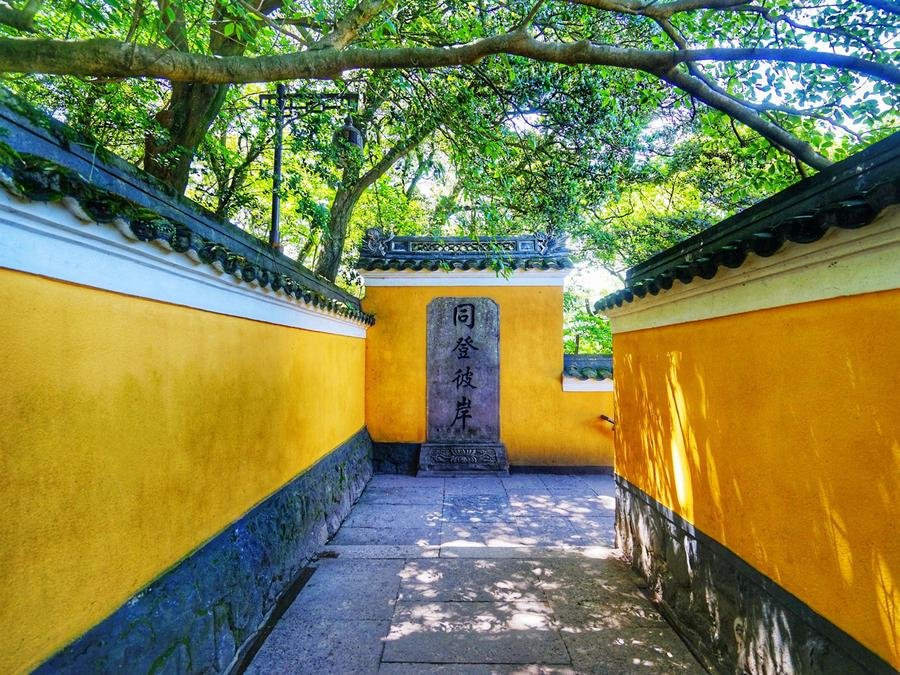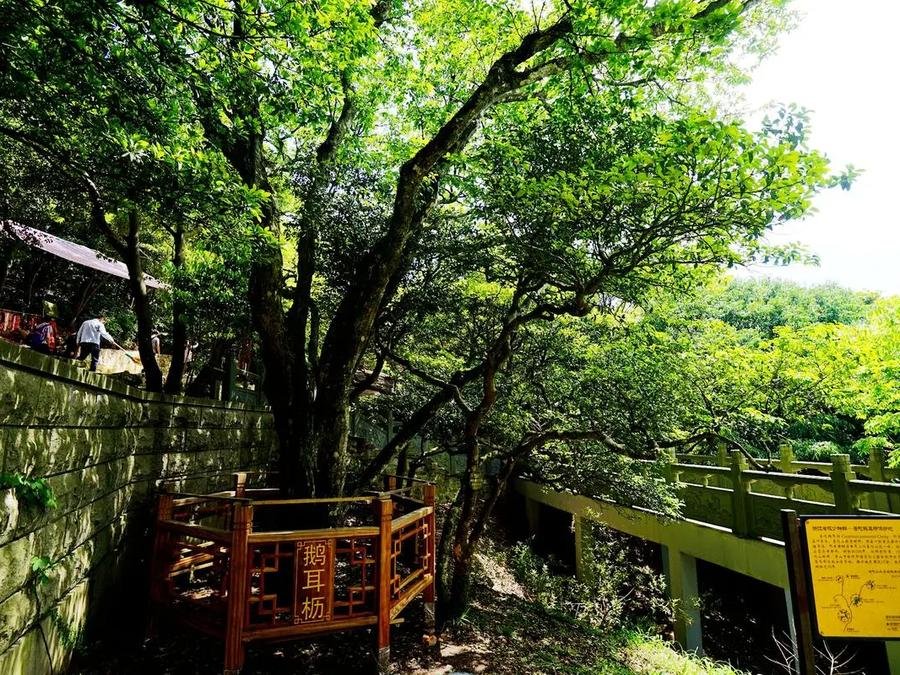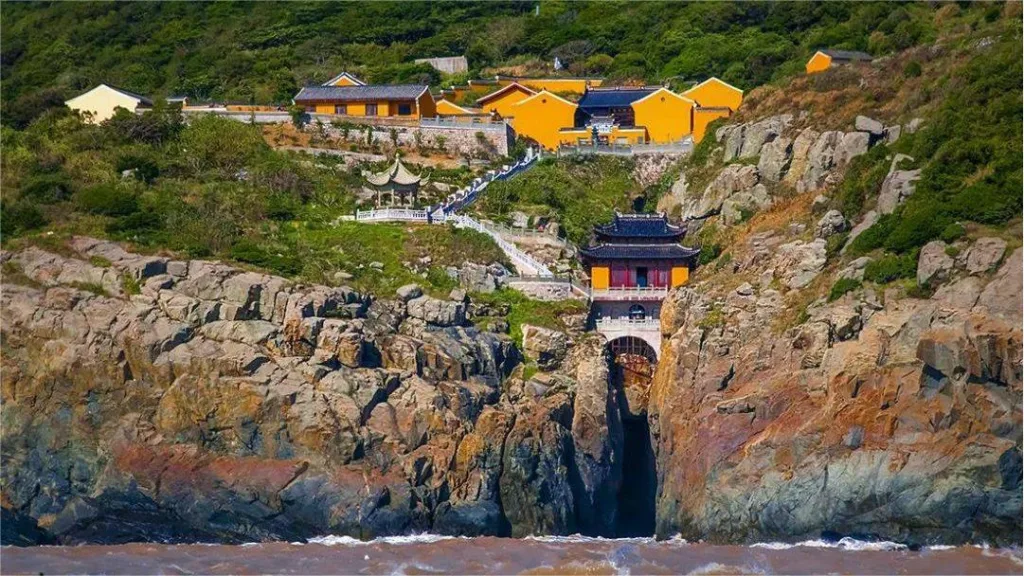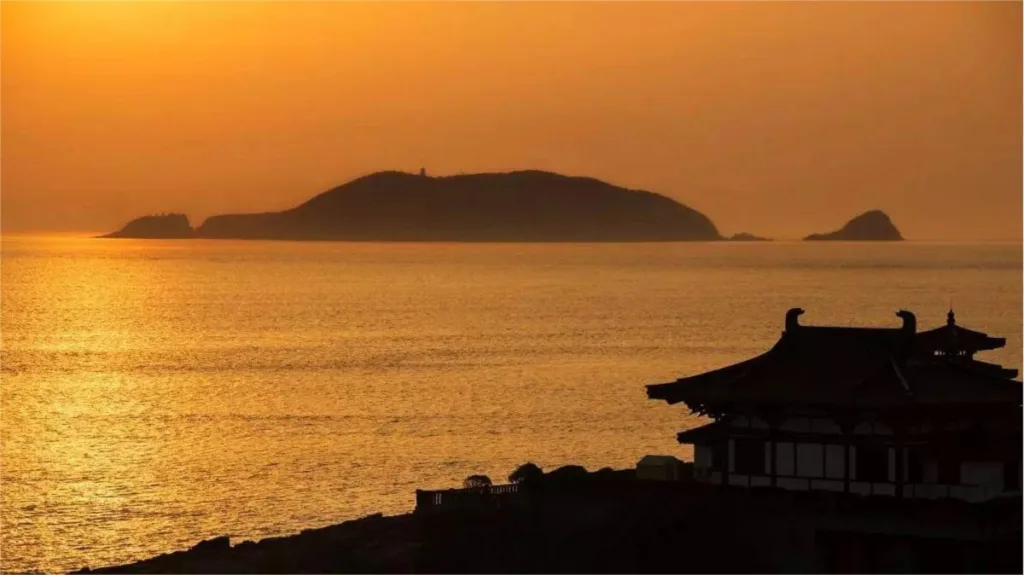Foding Mountain (佛顶山), also known as Baihua Peak or Pusa Peak, is the main mountain of Mount Putuo. The mountain’s ridges extend south, north, and east, with the main peak reaching an elevation of 291.3 meters. From a distance, the peaks appear to encircle the main summit, resembling a bowl floating on water. Key attractions on Foding Mountain include Huiji Temple, Haitian Buddha Cliff, Yunfu Stone, Pusa Peak, the European beech tree, and the Foding Mountain cableway.
Pilgrimage to Foding Mountain is a traditional practice in Putuo Mountain Buddhism. During the three major Guanyin festivals on the 19th day of the second, sixth, and ninth lunar months, numerous devotees make the journey to Foding Mountain, taking three steps and bowing once, to pay homage to Guanyin Bodhisattva.
Table of Contents
- Basic Information
- Location and Transportation
- Highlights of Foding Mountain
- Other Attractions on Mount Putuo
Basic Information
| Estimated Length of Tour | 1 hour |
| Ticket Price | Included in the ticket for Putuo Mountain |
| Cable Car | One-way: 25 RMB Round: 40 RMB |
| Opening Hours | 6.00 – 17.30 |
| Telephone Number | 0086-0580-3191919 0086-0580-6091414 |
Location and Transportation
Foding Mountain is situated within the Putuo Mountain Scenic Area in Putuo District, Zhoushan City, Zhejiang Province. To get there, you can taake bus number 2 to the Cable Car Station and then transfer to the cable car or climb up to the peak.
Highlights of Foding Mountain
Huiji Temple

Huiji Temple (慧济寺), also known as Fodingshan Temple, is situated in the misty Yunwu Mountain at an altitude of 299.1 meters. The temple complex includes 145 halls and pavilions, nestled amidst lush greenery. The Grand Hall of Great Strength, with its colorful glazed tiles, creates a breathtaking spectacle of “Buddha’s Light” under the sunlight. The temple’s unique architectural layout features several large halls arranged in a linear fashion, creating a distinctive charm. Among the three major temples on Putuo Mountain, Huiji Temple is the only one where the main hall is dedicated to Shakyamuni Buddha. The Guanyin Hall, completed in 1989, features walls embedded with 123 stone-carved Guanyin statues, showcasing masterpieces from famous painters of the Tang, Song, Yuan, Ming, and Qing dynasties. Originally established as Huiji Nunnery in the early Ming Dynasty, it was expanded into a temple during the 58th year of Emperor Qianlong’s reign in the Qing Dynasty, and further enlarged in the 33rd year of Emperor Guangxu’s reign, making it the third-largest temple on Putuo Mountain.
European Beech Tree

The European Beech Tree (鹅耳枥树) grows to the west of Huiji Temple’s back gate. Its branches bifurcate and make symmetrical 90-degree turns, a rare phenomenon, earning it the title of one of the “Three Treasures of Putuo.” It is also recognized as a national second-class protected plant. This rare tree was discovered in 1932 by the renowned Chinese botanist Zhong Guanguang during a botanical survey of the mountain. It was later identified and named by the distinguished botanist Zheng Wanjun as the Putuo European Beech Tree.
Xiangyun Road

Xiangyun Road (香云路) is a scenic stone path that stretches from Fayu Temple to Foding Mountain, featuring 1,087 stone steps and extending approximately 1 kilometer in length. Originally a narrow trail, it was paved with stone during the 30th year of Emperor Guangxu’s reign in the Qing Dynasty by the abbot Wenzheng and his assistant Qingxiang of Huiji Temple. The path was later renovated in 1982 with government funding. Alongside the road, iron railings are installed for visitors to rest and hold onto while climbing.
Midway along Xiangyun Road, there is a prominent square boulder with the inscription “海天佛国 (Haitian Buddha Kingdom)” written by the famous Ming Dynasty general Qi Jiguang, who was known for his resistance against Japanese pirates. Each character is about one meter square, perfectly encapsulating the essence of Putuo Mountain’s scenic beauty. This phrase has since become synonymous with Putuo Mountain.
On the cliff beside this inscription stands another rock known as “云扶石 (Yunfu Stone),” which is precariously perched, reaching into the clouds and adding to the path’s mystical allure. The inscription “Yunfu Stone” is carved onto this rock, and at its top, a small depression collects rainwater, forming a natural, crystal-clear pond that remains fresh over time.






